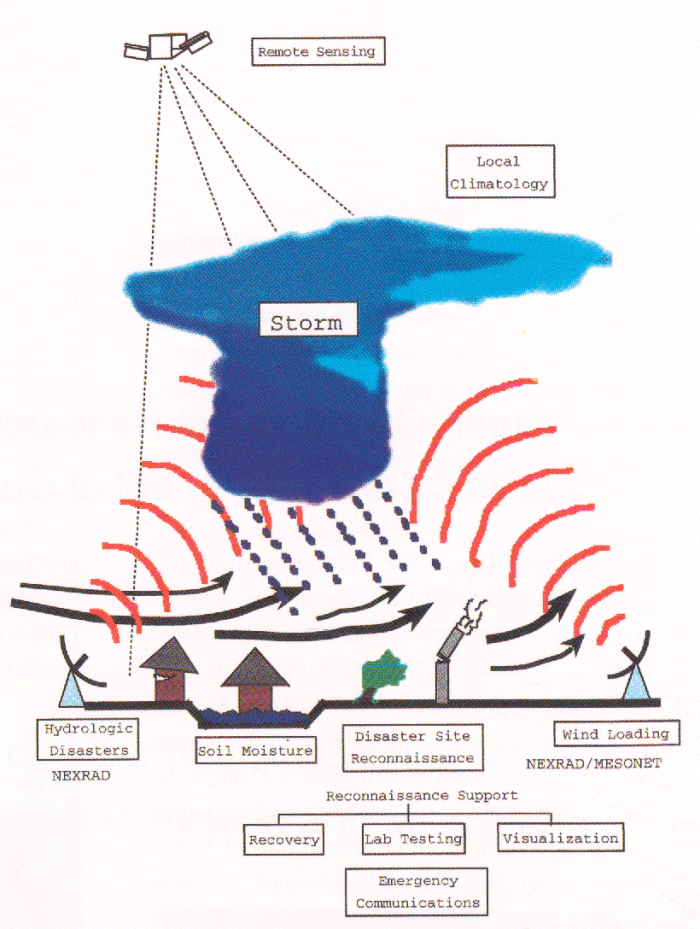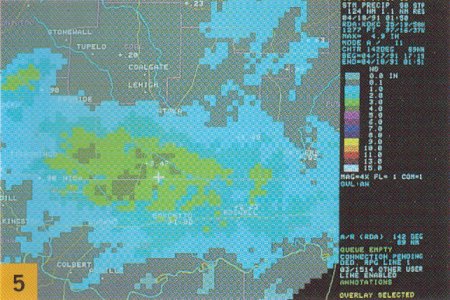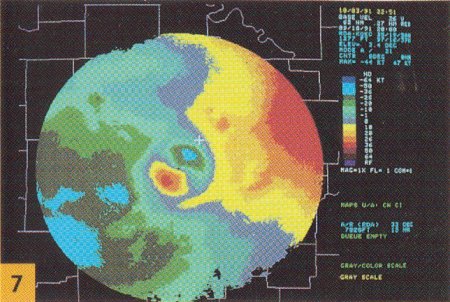
DPRI/ICDR Cooperative Research
The cooperative works between University of Oklahoma and DPRl can be traced back to 1960's. At first, members of DPRl went to Oklahoma City and installed Japanese sonic anemometer-thermometers on the TV-Tower of 400m high and studied the structure of the planetary boundary layer with the members of the University of Oklahoma.
In 1979 Prof. Sasaki visited DPRl and made a series of lectures on the variational methods for environmental analysis and prediction problem, the content of which was published in Severe Storm Research Note, No.1, 1979, This is the first introduction of MASCON(Mass consistent) analysis technique to Japan and its operational program Was also completed as a joint effort.
Dr. Van Horn the president of the University of Oklahoma visited Dr. Nishijima the president of Kyoto University to discuss on the cooperation between both universities in 1989. As the result, agreement for Educational and Scientific Cooperation between the Research Administration of the University of Oklahoma and Disaster Prevention Research Institute of Kyoto University was signed in 1991. On the basis of the above agreement, the University of Oklahoma has established in 1991 a new research center which intended to act as the counterpart of DPRI. The new center was named the International Center for Disaster Research(ICDR).
 A research program on the strategy of world disaster reduction was started between these institutes under the support obtained from the Ministry of Education, Science, Sports and Culture of Japan, 1992Å`1994.
A research program on the strategy of world disaster reduction was started between these institutes under the support obtained from the Ministry of Education, Science, Sports and Culture of Japan, 1992Å`1994.
This cooperative works established the foundation of world wide operation on the disaster prevention.
The disaster reconnaissance method has been studied in this study, but that had never been experienced the real disaster investigation. Thereafter we have been concerned in the disasters by typhoon 9119, hurricane Andrew, Tulsa tornado(1991), Ada tornado(1994), Gainesville tornado(1994), Federal building and blasting(1995) and Ardmore tornado(1995).
Meanwhile a new WSR-88D(Next Generation Weather Radar-NEXRAD) was developed by U.S. Government. DPRI/ICDR recognized the importance of this development because it seemed to have an unprecedented positive potential to purpose our joint goal of natural disaster reduction. Therefore we decided to focus on collaborative disaster research plan in the areas of weather-related natural disaster.
Then the overall objective of proposed collaborative study was to reduce weather-related disaster hazards through effective application or storm research, To accomplish this end, the work was divided into wind loading, short and long-duration hydrologic disasters, and ground-truth components. These were supplemented by additional support elements.
In this coordinated study of wind and rain disasters, we developed accurate precipitation estimates from NEXRAD and Japanese C or X band radars using reflectivity, polarization, and Doppler wind measurements as seen above, Through combination of the precipitation prediction algorithm and the distributed flood model using GIS and radar precipitation estimates, we got insight into the prediction of topographic effects on flooding under monsoon and climatic conditions in Japan, flash food and climatic phenomena in the U.S.





 A research program on the strategy of world disaster reduction was started between these institutes under the support obtained from the Ministry of Education, Science, Sports and Culture of Japan, 1992Å`1994.
A research program on the strategy of world disaster reduction was started between these institutes under the support obtained from the Ministry of Education, Science, Sports and Culture of Japan, 1992Å`1994.



